OpenSea-NFT: inseparable duo
The enormous success of NFTs is due in large part to two realities: Ethereum and OpenSea.
Ethereum is the second largest blockchain; it has seen the birth, growth and establishment of the digital art phenomenon.
OpenSea has long been the most important NFT Marketplace, where Non Fungible Tokens of all kinds are sold and bought on a daily basis: from simple photographs to land in The Sandbox metaverse. Today the scepter of main marketplace is in the hands of Blur, but OpenSea still retains great importance.
Applications of non-fungible tokens are growing all the time. Born as something curious, they are increasingly integrated into the marketing strategies of companies, sports teams, celebrities and artists. It is now impossible to ignore the scale of this phenomenon.
Filed a record-breaking 2021 and a swinging 2022, the industry continues in a more structured and healthy expansion than in the past.
OpenSea is once again a major player and continues to move impressive numbers.
After a brief introduction, we will go into more detail about the main features of the platform, focusing mainly on three elements:
- Purchasing an NFT on OpenSea
- Creating an NFT on OpenSea
- Selling an NFT on OpenSea
How does OpenSea work?
OpenSea is the first NFTs buying and selling platform, known and used worldwide. This marketplace turns very high numbers daily, setting itself as a benchmark.
On OpenSea you can even just browse through the many categories of creations. We find everything: real works of art, art photographs, illustrations of dubious quality and oddities never seen before.
For those interested in learning more, here is a comprehensive and updated 2024 article devoted entirely to NFTs.
The platform supports many blockchains: Ethereum, Klaytn, Polygon, Arbitrum, Optimism, Avalanche, Solana, and BNB Smart Chain.
The former needs no introduction and is where most non-fungible token exchanges take place. It represents the best choice for both creators and customers, but beware of high gas fees.
Polygon is the economically viable alternative to Ethereum; among other things, it makes it possible to create NFTs at zero cost.
Klaytn is a chain developed by a Korean company. Using the Kaikas wallet browser extension one can connect with OpenSea and the proposed works.
Arbitrum and Optimism are the two main Ethereum layer-2s. OpenSea’s choice to support these two networks makes life easier for users.
How to create an OpenSea account?
First of all we will need a crypto wallet. There are many options available, including MetaMask and WalletConnect, which is great for interacting with Trust Wallet.
After that we will just go to the opensea.io site and click on the “person icon” located in the top right corner. We select Profile to proceed with the wallet connection.
Next, after making our choice, we sign in via the Sign button:
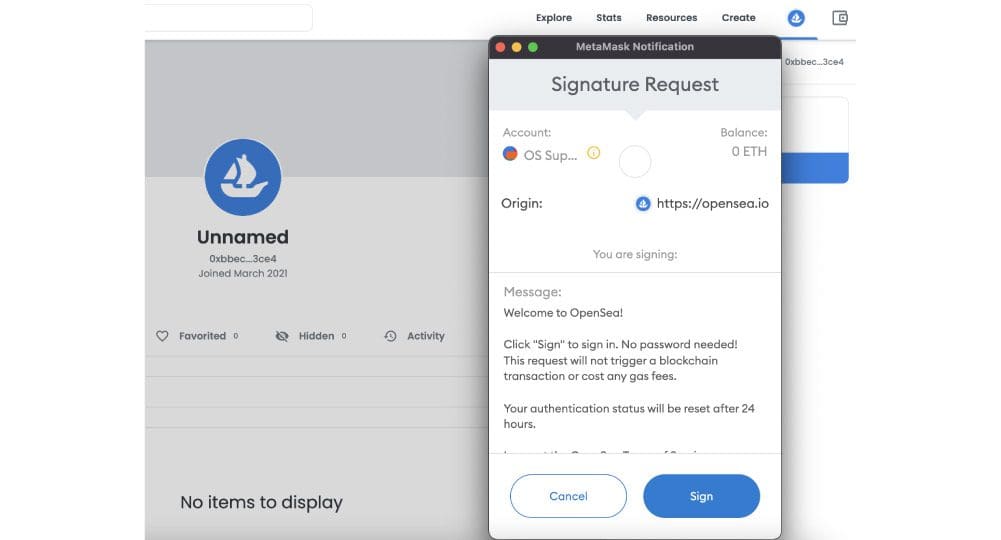
Congratulations: the profile has been created!
By logging in we will be able to edit the name, avatar and enter some of our own information. For buyers or just curious, this is not mandatory. Those interested in creating and selling NFTs on OpenSea should customize these fields instead.
OpenSea is truly the best place for buying and selling non-fungible tokens. As evidence of this, numerous companies, actors, sportsmen and celebrities have established partnerships with the platform; Mike Tyson, Saturday Night Live and Coca-Cola are part of this circle.
So let’s not waste any more time and set off on a discovery!
How to connect MetaMask to OpenSea?
As we said in the previous paragraph, connecting a crypto wallet to OpenSea is super easy. Since it is the most widely used, let’s answer a token question: how to connect MetaMask to OpenSea? Here are the steps:
- Let’s connect to the portal;
- Let’s open the OpenSea browser extension and type in our password.
- On OpenSea, click on the “wallet icon”, select MetaMask and connect.
The NFT offering on OpenSea
You know the huge American malls, where you can get lost all the time so many storefronts and stores are there? OpenSea looks just like these shopping strongholds. However, unlike items and food, this portal is the realm of NFT buying and selling.
Seriously exploring OpenSea’s offering is tantamount to an adventure: the many categories encapsulate thousands of creators and countless works.
So let’s take a look at what the platform has to offer. Let’s not say, then, that it will be easy to browse the huge library, but at least we won’t get lost after the first click.
From the homepage, simply scroll down to be able to view current trends, OpenSea’s NFT giants, and much more.
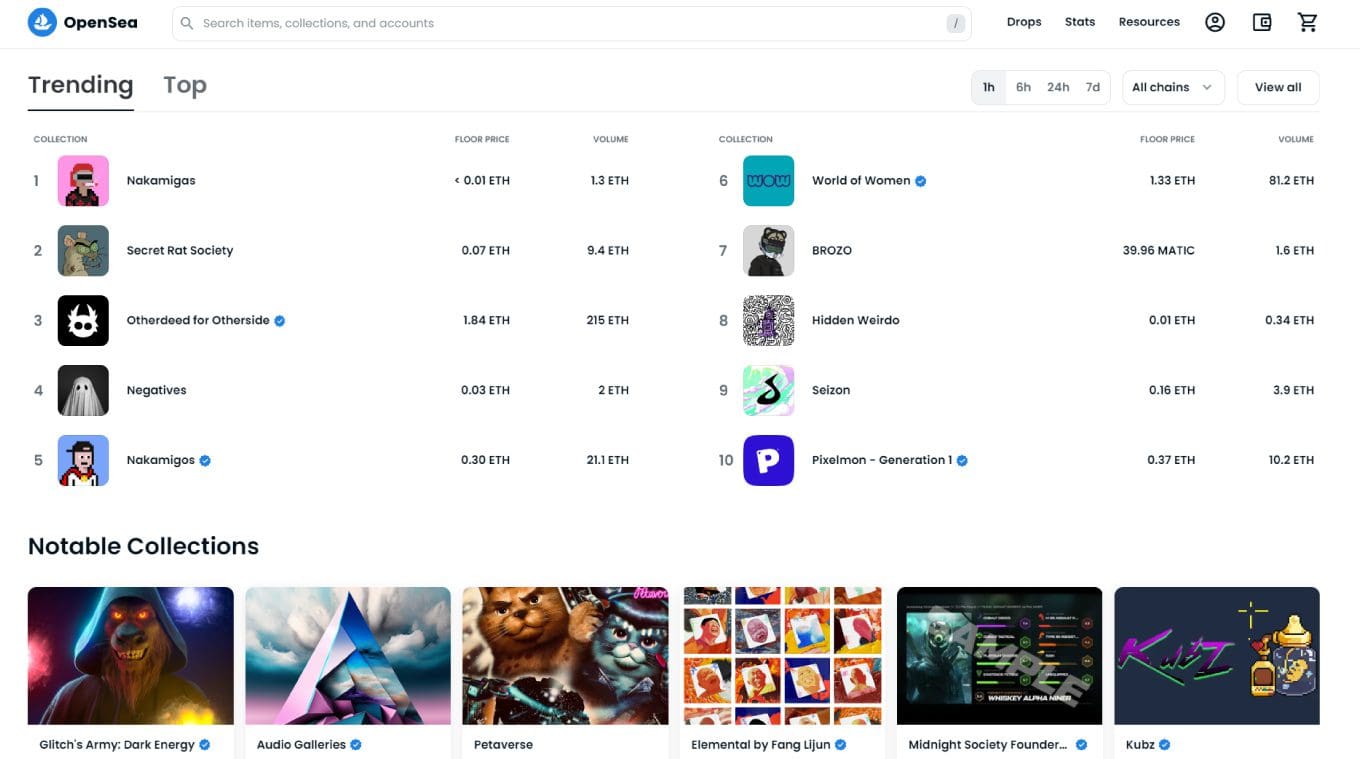
At this point we have the freedom to opt for a specific category (we find them at the bottom) or to freely browse through the trends of the moment.
As we said a few lines above, it’s really easy to get lost on OpenSea. If you are the least bit curious, within seconds you find yourself opening several tabs to discover the collections that scroll across our screen. It creates a sort of “Instagram effect” that leads one to keep searching and peeking at content-we warned.
Luckily, the search function comes to our rescue: if we were looking for something in particular, let’s take advantage of it to save precious time!
Clicking on a collection will take us to the dedicated page, where we will be able to view all of its creations.
In this image, the NFT Azuki collection, one of the big trends of the past, with sales volumes exceeding 765,000 ETH: not bad at all.
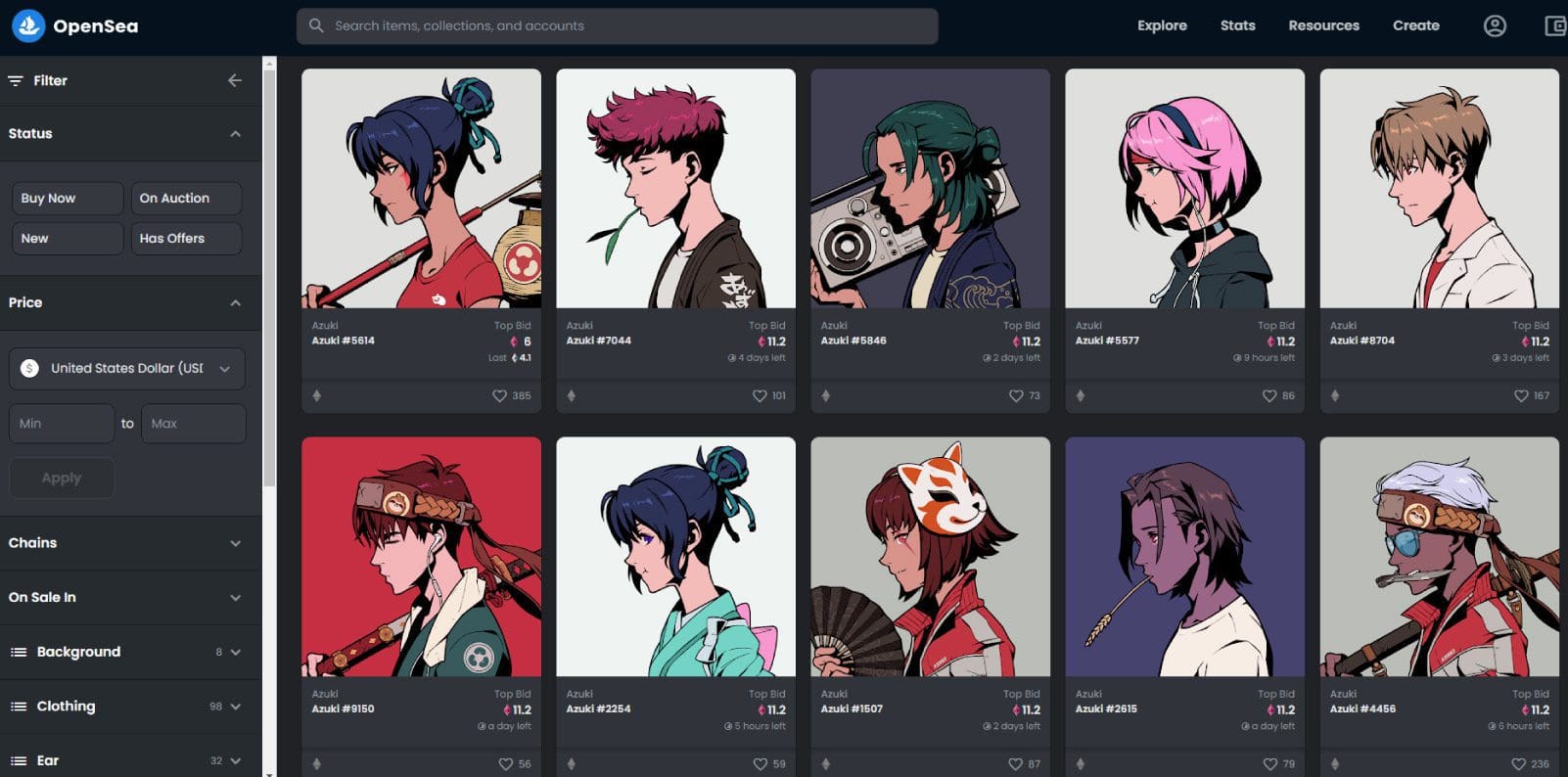
From the sidebar on the left we can set several search filters, especially useful in case we are interested in buying.
First, the status: buy now (Buy Now); at auction (On Auction); new (New); has offers (Has Offers). For example, potential buyers could select Buy Now and On Auction. Or New, so that they are immediately informed of all the news of the moment.
Inevitable is the ability to provide minimum and maximum price, as well as the currency of the same in USD, USDC, ETH and SOL.
More specific filters regarding background, clothes and facial features follow. Of course, these vary by collection and depend on the attributes the creators have assigned to the NFTs.
The more curious can also consult the OpenSea statistics available under Stats in the menu.
Clicking on Rankings will show us the ranking of the hottest collections of the moment. Obligatory to hold on to: the figures are absolutely mind-boggling.
On the Activity page, on the other hand, we will be able to view all the transactions that have taken place on the platform, updated in real time. From here one is able to understand the scale of OpenSea’s turnover and realize that it is not a passing fad.
Now that we know how to explore the main areas of the portal, why not take a look at how to buy an NFT?
“OpenSea is a giant marketplace of Non-Fungible Tokens in which you can get lost in seconds”
How to buy NFTs on OpenSea?
Exploring OpenSea, we noticed an interesting collection. Looking through the works, one caught our eye and we would like to purchase it…let’s find out how!
First we will need to find out if the NFT we have our eye on is for sale. If it is, it will be necessary to see in what manner.
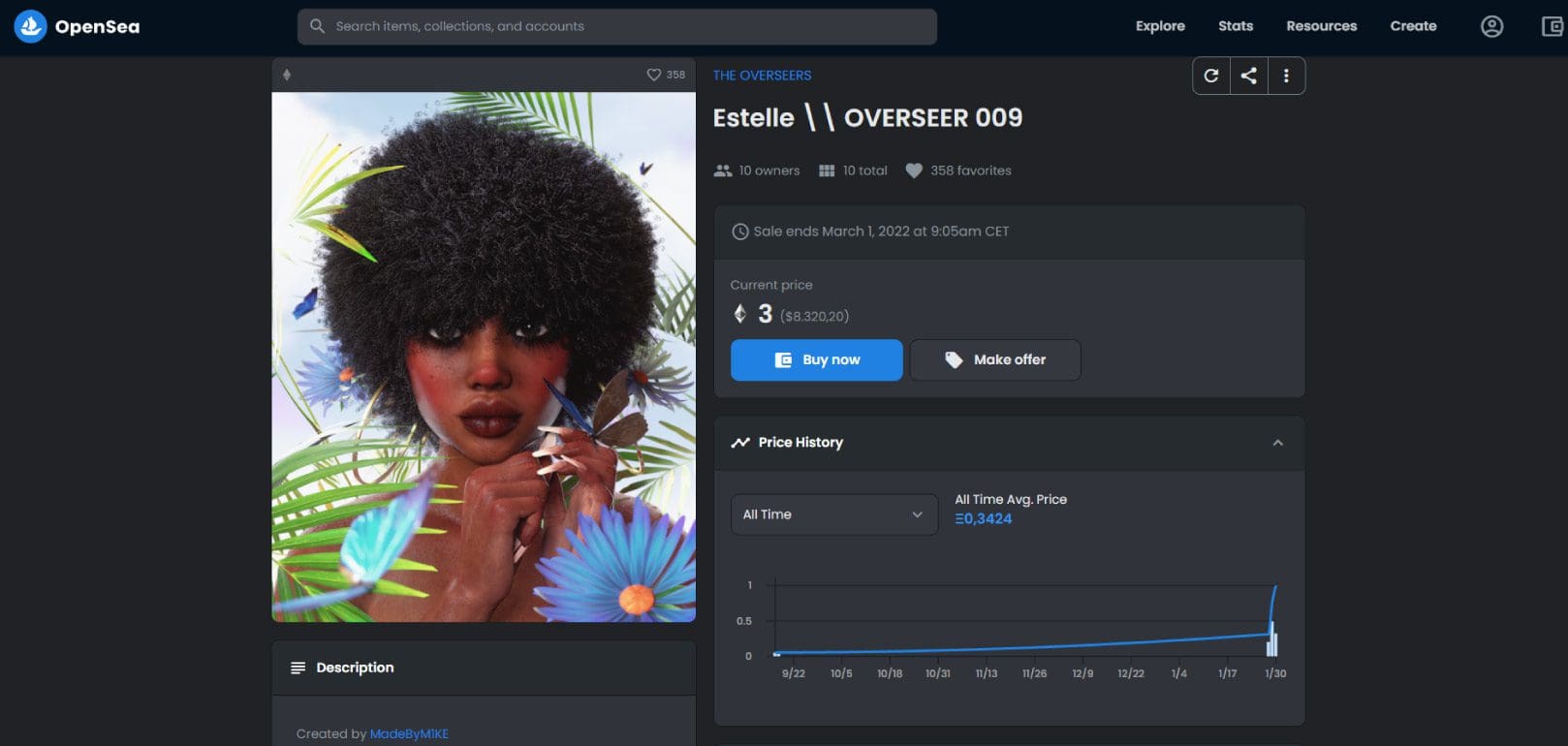
This screenshot depicts the detail page of an NFT from THE OVERSEERS collection.
On the left we see the actual artwork.
On the right, however, we find a box containing the Buy Now button. In this case, the NFT is immediately purchasable on OpenSea at the indicated price (3 ETH).
If we want, by clicking on Make offer we could propose another amount to the owner; clearly it will be at his/her discretion to accept or reject.
It is not always possible to buy immediately: sometimes we will come across an auction, as with this realization of the Azuki line.
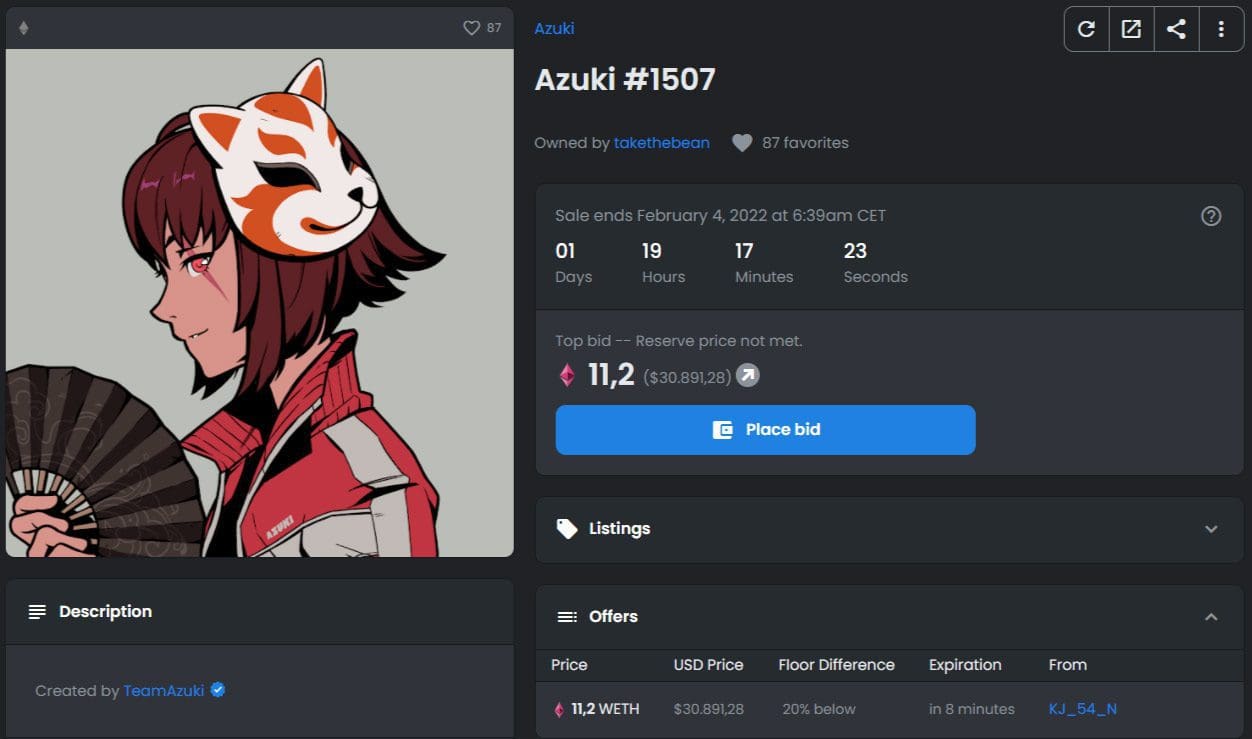
As we can see, there is a box with the bidding history (in this case one from 11.2 WETH).
There is information about when the auction expired and when the reserve price set by the seller was reached (or not).
This experience does not differ much from platforms like eBay: you place your bid and wait. If it is not raised, the NFT is ours; if not, we will have to continue to battle with other OpenSea bidders.
Whether it can be bought now or at auction, the process is simple: we click on the Buy now or Place bid button to bring up a popup window from which to confirm.
Obviously we will need to have all the required funds available plus those needed to pay the gas fees. We approve the transaction in the wallet to finish the job.
Speaking of gas: how much do you pay on OpenSea? The amount varies depending on the blockchain on which the non-fungible token is posted. Before placing a bid or confirming a purchase, carefully read the summary of expected costs.
Back to NFTs, however, sometimes they are not even up for auction. In these cases, there is no box with purchase options and we can do nothing but look at the creation as if we were in a museum.
Are we feeling inspired and want to take an extra step, perhaps trying to make one of our passions for art, photography, or music pay off? Let’s find out how to create an NFT on OpenSea.
“On OpenSea you can find NFTs for all tastes and budgets, from a few dollars to astronomical amounts”
How to create an NFT on OpenSea?
The first step is to make the actual work (here is the introductory guide on how to create NFTs). An NFT can host almost any form of art or original realization possible: music, video, text, images…it’s up to us.
When we own our creation, we go to OpenSea and connect the wallet. We then continue by clicking on the Create heading in the menu.
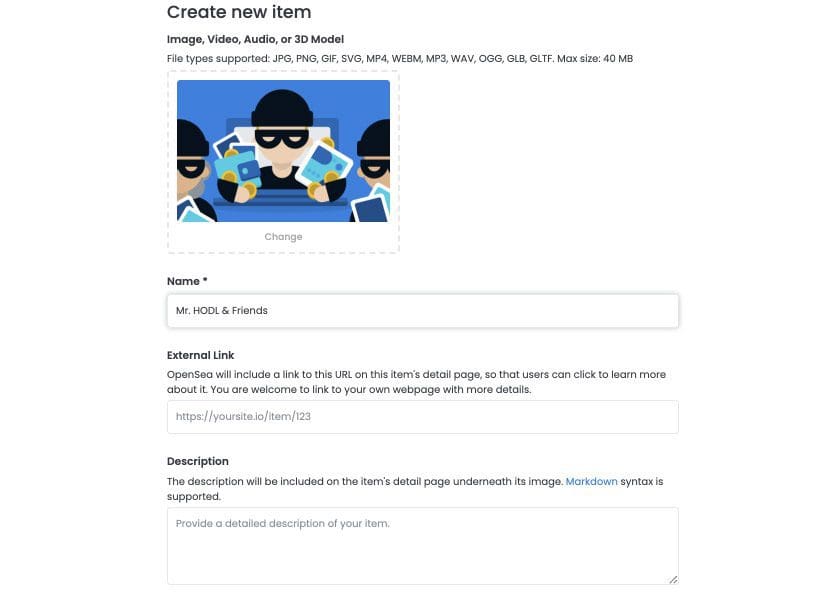
We go to enter the file of our creation. In this screenshot, taken from the official OpenSea platform documentation, an image has already been uploaded.
Pay attention to the file type: it must be among those supported.
We continue by assigning a name to the NFT and, optionally, providing links to one of our sites or social channels and description.
That done, we continue with the creation process.
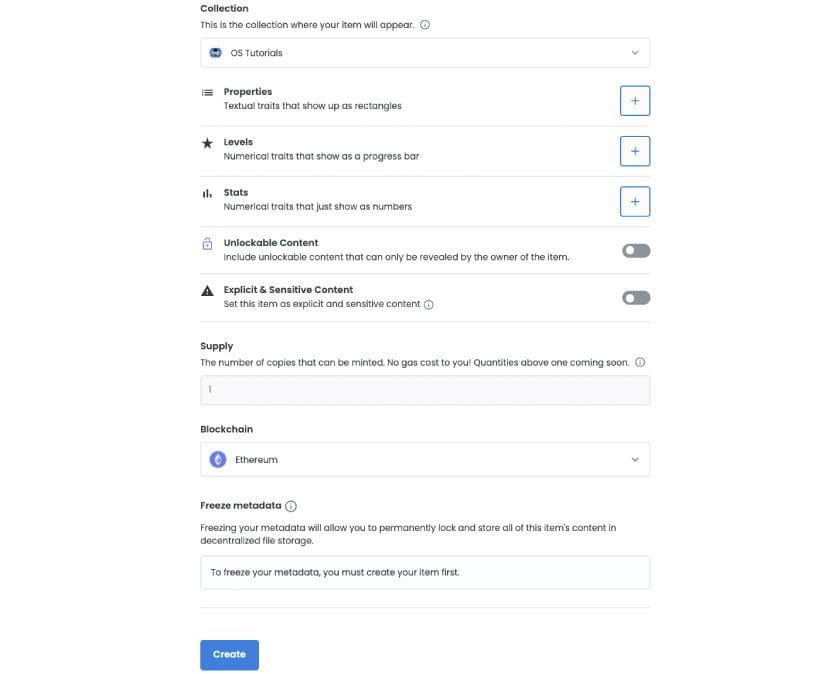
We will find several fields that we can fill in:
- Collection: this is the collection in which the NFT will be placed. From the profile you can easily create as many as you want.
- Properties, Levels, Stats: these are different metadata from each other that we can use as we wish. For example, if we were starting a collectible card game, probably some entries of the voice “Stats” will be indispensable to indicate attack, defense and magic values.
- Unlockable content: by activating it, only the owner of the NFT will be able to view unlockable content. Using an analogy, this is similar to the extra content on a DVD: you don’t know about it until you own the disc and watch it.
- Explicit & Sensitive Content: NFTs are not just photos and monkeys; there is explicit content of various kinds. In these cases, the creator is required to check the box.
- Supply: one or more copies can be created.
- Blockchain: Ethereum, Klaytn, Solana, Polygon or others? OpenSea allows us to choose which blockchain to mine the NFT on. As always, beware of the cost of gas.
- Freeze metadata: a useful option for those who would precisely like to freeze and store the metadata of the non-fungible token.
After filling in the fields of our interest, we click Create and approve the transaction in the wallet. Within a few seconds the NFT will be located in our profile.
How to sell an NFT on OpenSea?
We could not overlook another essential feature: selling.
After creating an NFT, we enter its dedicated page. Getting there is easy: we will find the creations in our profile. We then click on the button at the top and prominently displayed by the word Sell. At this point the following screen will open:
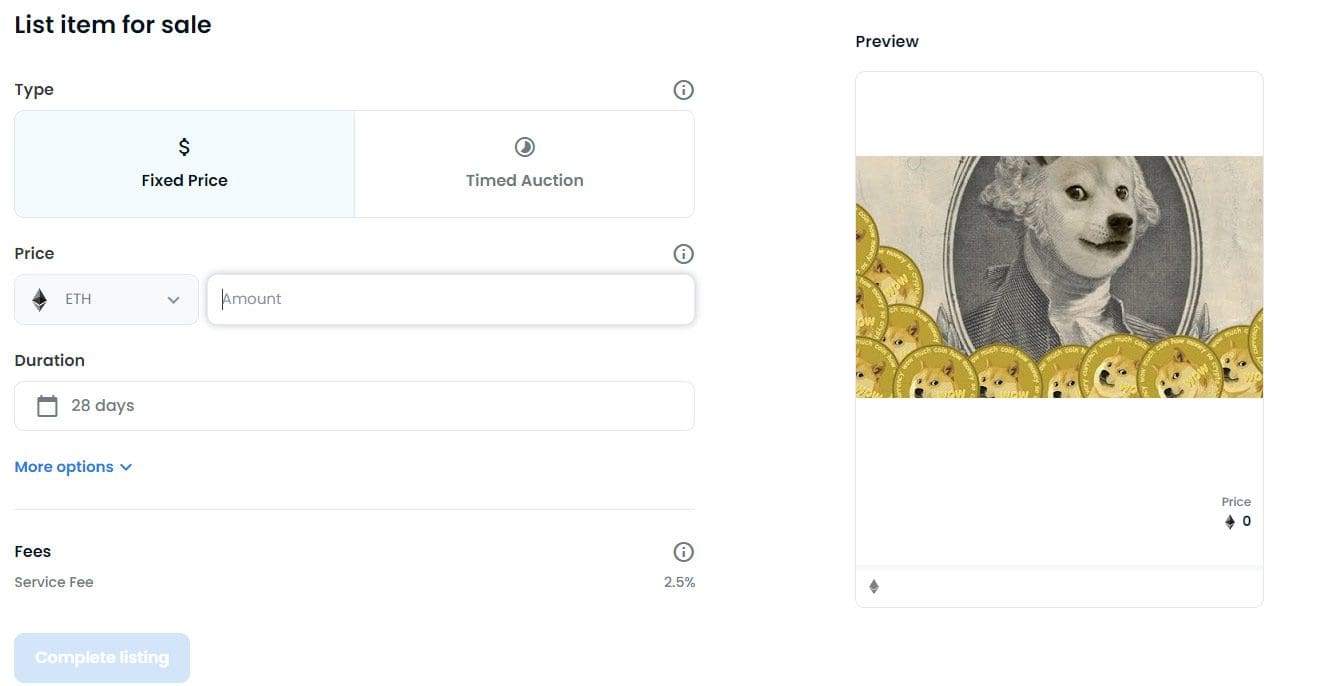
It will be necessary to indicate the type of sale: fixed price or auction?
In the first case, we will indicate the desired amount and duration. If the NFT is not purchased, it will be automatically taken off the market when it expires. Later we can put it back on sale without any problem.
In case of an auction, things do not change much: we will enter a starting amount instead of the price and we can also provide a reserve amount.
When finished, we click the button at the bottom and approve the transaction in the wallet to officially become non-fungible token sellers.
How much does it cost to sell on OpenSea? Depending on the type of market and the price of the work, fees vary. Generally OpenSea charges a 2.5 percent fee on sales in the secondary market. For more detailed and up-to-date information, see OpenSea support.
OpenSea: interesting projects, oddities, and curiosities
Let’s give space to some NFTs that have contributed to the history of the platform.
We have already mentioned Azuki: 10,000 works depicting manga-style faces, accompanied by various accessories. Prices have really reached the moon.
Also particularly in vogue are creations such as CryptoPunks, Bored Ape Yacht Club and Mutant Ape Yacht Club, often featured in news stories; for example:
- Singer Justin Bieber purchased a Bored Ape for nearly $1.3 million;
- A collector suffered a digital attack by an attacker, losing a whopping $2.7 million in NFT Bored Ape. Unfortunately, even in the NFT universe it is necessary to be very careful.
Proposals are also being joined by gaming and entertainment companies. In fact, to celebrate 35 years of the famous video game Castlevania, Konami created a small collection of works literally taken by storm.
There is also room for art in the classic sense of the word: one example is Gabe Weis, a highly regarded artist who brings cubism to the world of NFT. That’s the beauty of it: seeing such different creations side by side gives rise to a surreal atmosphere, all to be discovered.
There’s no shortage of weirdness, indeed: from bees on swings to crypto-people, there’s something for everyone.
Here, let’s face it: speculation has led to exaggeration and valuing everything. No wonder, then, that several people generalize by calling NFTs absolutely useless (to say the least).
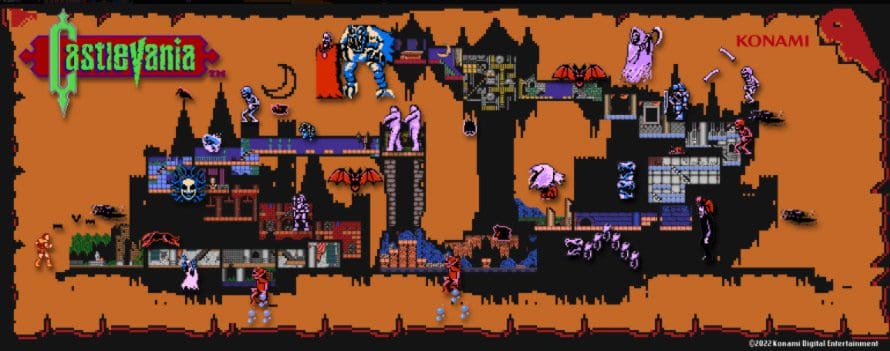
OpenSea: where NFTs are at home
The history of NFTs is closely linked to that of OpenSea: the growth of one has gone hand in hand with that of the other, in absolute symbiosis.
While somewhat tarnished by excessive bubble speculation, these tokens are consolidating. However, the future will be one of further expansion, and platforms cannot waste any time: they must keep up.
OpenSea continues apace on its journey, firmly maintaining its leadership. Alternatives are making inroads but it seems difficult for them to challenge the dominance, at least for now.
We have seen how the most well-known creators of NFT converge on this platform, as well as many famous personalities and companies.
Moreover, this is where the buying and selling of land and items from The Sandbox, one of the most famous and growing metaverses, takes place.
Therefore, everyone, from artists to the merely curious, goes to OpenSea with confidence: it is the absolute best place when it comes to non-fungible tokens, a trend that is becoming more and more established in the real world as well.
After this insight, we too are ready to use this portal and who knows…create something successful? Or buy future Bored Apes?
Either way, best of luck!
This news is republished from another source. You can check the original article here






